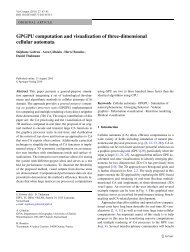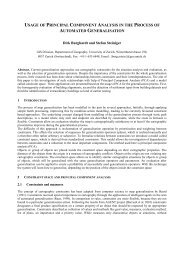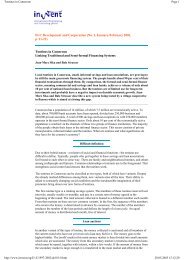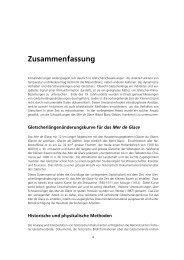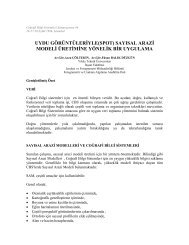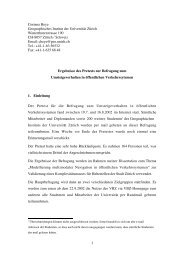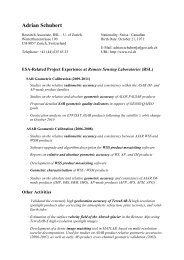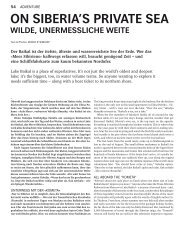KYRGYZSTAN TODAY Policy briefs on - Department of Geography
KYRGYZSTAN TODAY Policy briefs on - Department of Geography
KYRGYZSTAN TODAY Policy briefs on - Department of Geography
Create successful ePaper yourself
Turn your PDF publications into a flip-book with our unique Google optimized e-Paper software.
• existence <strong>of</strong> certain rules <strong>of</strong> the game and norms which are known to the subjects<br />
<strong>of</strong> corrupt activities;<br />
• established terminology <strong>of</strong> corruptive acti<strong>on</strong>s; e.g. “to get things settled” means<br />
to solve the issue through a bribe or a comm<strong>on</strong> friend;<br />
• an established fee for services known to those involved in it. According to a<br />
number <strong>of</strong> experts, there are set fees for not initiating a criminal case, for release<br />
from custody, or for remissi<strong>on</strong> <strong>of</strong> a penalty. Normally, fees depend up<strong>on</strong> the<br />
resoluti<strong>on</strong> and category <strong>of</strong> cases; e.g. in ec<strong>on</strong>omic cases, the fee for settling the<br />
issue depends <strong>on</strong> the cost <strong>of</strong> the specific acti<strong>on</strong>. However, other experts say there<br />
are no fixed bribe rates, since every case is looked at individually.<br />
Some authors talk about such corrupt acti<strong>on</strong>s as rule-based corrupti<strong>on</strong>, “when<br />
judges ask for a bribe to fulfill their duties which they should fulfill by law”<br />
[10, p. 111]. Such cases are very comm<strong>on</strong> in the judiciary (making a legal court decisi<strong>on</strong><br />
or announcing a legal sentence for a bribe), which involves no visible violati<strong>on</strong> <strong>of</strong> the<br />
law.<br />
The issue <strong>of</strong> judicial corrupti<strong>on</strong> is comm<strong>on</strong> in all post-Soviet countries. For example,<br />
in 2004 V. Zor’kin, Chairman <strong>of</strong> the Russian C<strong>on</strong>stituti<strong>on</strong>al Court, said that bribery in<br />
the courts had become <strong>on</strong>e <strong>of</strong> the most severe sites <strong>of</strong> corrupti<strong>on</strong> in Russia. Judicial<br />
corrupti<strong>on</strong> is integrated into various corrupt networks functi<strong>on</strong>ing at different power<br />
levels, e.g. in the network <strong>of</strong> destroying criminal cases and taking over some<strong>on</strong>e’s<br />
business [15]. Journalists from the newspaper 24, in a study <strong>of</strong> different court cases,<br />
interviewed prominent Ukrainian lawyers and human rights activists, who helped<br />
them reach almost the same c<strong>on</strong>clusi<strong>on</strong>: “Ukrainian courts are stuck in corrupti<strong>on</strong>.<br />
There a certain scheme in the existing judicial system through which m<strong>on</strong>ey reaches its<br />
beneficiaries, with c<strong>on</strong>crete rates for the services <strong>of</strong> judges” [12]. Many publicati<strong>on</strong>s in<br />
other CIS countries publish the same informati<strong>on</strong>.<br />
Top-ranking <strong>of</strong>ficials also recognize the existence <strong>of</strong> corrupti<strong>on</strong>, although indirectly.<br />
The president <strong>of</strong> Kyrgyzstan, K. Bakiev, speaking at a gathering <strong>of</strong> judges, said that the<br />
community <strong>of</strong> judges should get rid <strong>of</strong> inappropriate staff who view the positi<strong>on</strong> <strong>of</strong> a<br />
judge as a business, and thus severely damage the image <strong>of</strong> justice. We should part with<br />
such judges, he said, with no regret [2, p. 11].<br />
In 2000, a large sociological survey <strong>on</strong> corrupti<strong>on</strong> was c<strong>on</strong>ducted in Kyrgyzstan,<br />
when 2,100 resp<strong>on</strong>dents were interviewed. According to the survey data, gathered<br />
from the public, the courts and prosecutor’s <strong>of</strong>fices are number two in the list <strong>of</strong> most<br />
corrupt organizati<strong>on</strong>s (83 percent <strong>of</strong> the resp<strong>on</strong>dents said corrupti<strong>on</strong> is spread widely<br />
there) [8, p. 28]. Most experts interviewed believe that the situati<strong>on</strong> is not likely to have<br />
changed drastically since that time, although in recent years (starting in 2005) the level<br />
<strong>of</strong> public trust toward courts and law enforcement agencies has become somewhat<br />
higher.<br />
In 2000, those who researched corrupti<strong>on</strong> reached the c<strong>on</strong>clusi<strong>on</strong> that, when corrupti<strong>on</strong><br />
permeates uniformed services, and particularly law enforcement agencies (police and<br />
prosecuti<strong>on</strong>), it is especially dangerous for society. In the l<strong>on</strong>g run, this may lead to the<br />
merging <strong>of</strong> corrupt elements in the state with ec<strong>on</strong>omic crime, and result in the following:<br />
– launching “complex brigades” that making m<strong>on</strong>ey from destroying criminal<br />
cases;<br />
– pressure <strong>of</strong> law enforcement agencies <strong>on</strong> business rivals in return for bribes;<br />
– precedents <strong>of</strong> law enforcement <strong>of</strong>ficers who also join commercial structures and<br />
embrace both roles [8, p. 32].<br />
146







